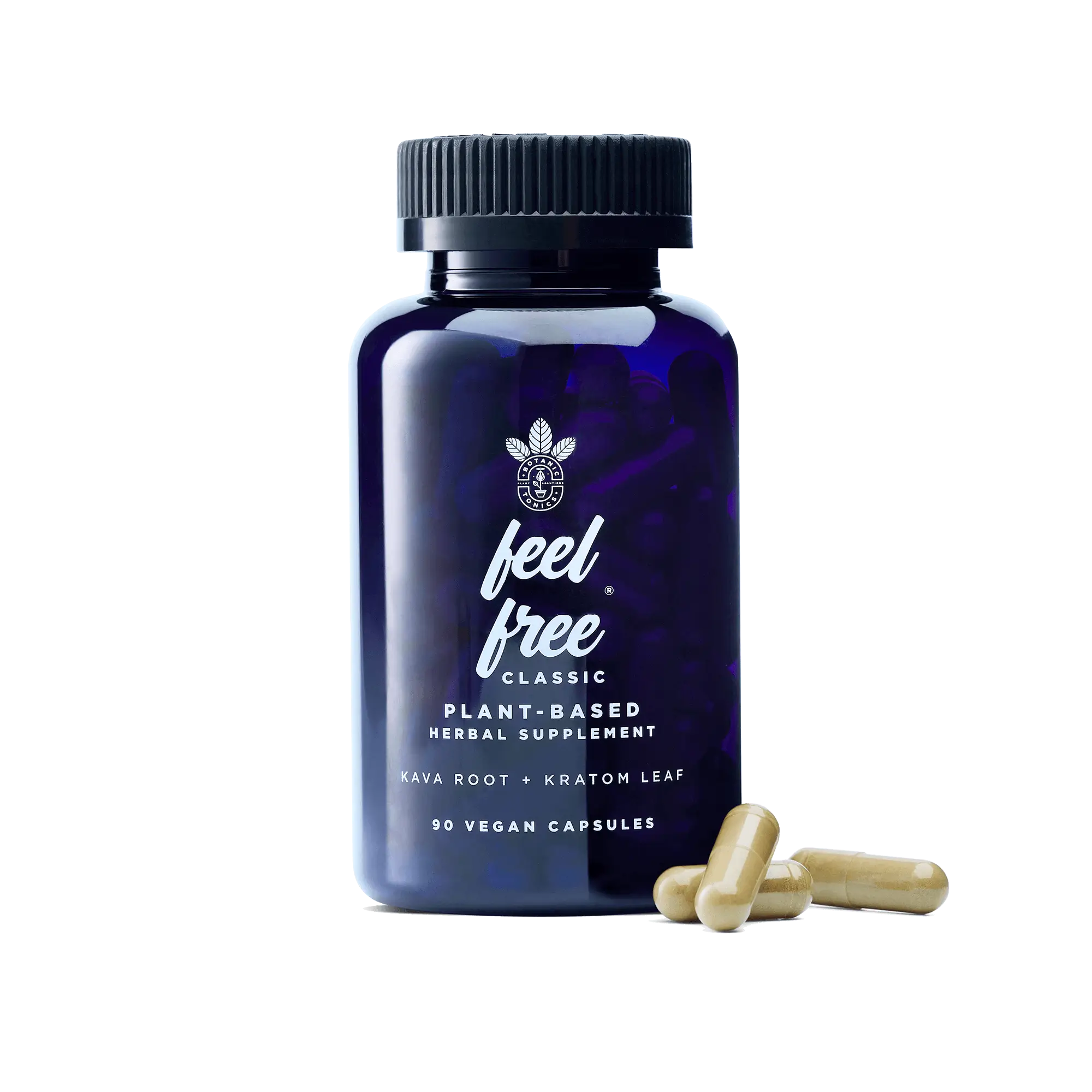Kratom vs Kava: How Do They Compare?
In the quest for natural ingredients that promote relaxation and focus, many individuals have turned to kava root and leaf kratom. Both of these plants have gained popularity for their unique effects and potential health benefits. In this article, we will explore the differences between kratom vs kava, their uses, benefits, effects, safety considerations, and why feel free incorporates both ingredients into their feel free CLASSIC tonic.
What is Kava?

The kava root, scientifically known as Piper methysticum, is a plant native to the South Pacific islands. It has a rich cultural history of being used for ceremonial and social purposes. Kava is prepared by grinding the root into a powder and mixing it with water to create a beverage. The active ingredients in the kava plant, called kavalactones, are known for their calming but uplifting and relaxing effects.[1]
What is Kratom?
Now that we've talked about kava, what is kratom? Kratom, scientifically known as Mitragyna speciosa, is a tropical evergreen tree that belongs to the coffee family and is native to Southeast Asia, particularly, Indonesia, Thailand, and Malaysia. Kratom leaves have been traditionally used in these regions for centuries. The leaves are often consumed fresh from the tree or by brewing them into a tea or decoction. Kratom tea is a common recipe enjoyed in Southeast Asia to enhance energy, physical endurance and increase mood.[2] Today, kratom use in the West has dramatically increased over the past few decades with reported uses for mood enhancement and energy increase.
Consumption details for kratom products:
- Serving Size: it is important to consume kratom in moderation. Traditional use of kratom is from the leaf material, where very low doses of the active compounds are consumed.
- Quality: make sure your kratom tea or tonic is from a reputable vendor who is performing quality testing on their products as there have been reports of adulterated kratom in the US market.
Here at feel free we use green vein leaf kratom, sourced from Indonesia. We take every precaution to guarantee the quality and purity of our leaf kratom. Each batch of leaf kratom undergoes processing in a facility that adheres to current good manufacturing practices. Kratom is NOT an opioid and is not approved as a drug. It is sold in the US as either a dietary supplement or food. In 2018, an attempt to schedule kratom as a controlled substance was stopped by congress. Certain jurisdictions in the US have put restrictions on the sale and use of kratom so be sure to check your local laws prior to use.
How do Kava and Kratom Compare?
3 Pharmacological Differences
While these two may have similar effects, kava and kratom differ in their active compounds and mechanisms of action. The active ingredients in kava primarily acts on the central nervous system, promoting relaxation and reducing anxiety without sedation. On the other hand, kratom showcases both a stimulant and sedative effect, depending on the dose and the individual.
Kava and Kratom Uses
Many individuals turn to kava to reduce stress, anxiety, and promote a sense of well-being. It is also utilized for its potential muscle relaxant properties. Kratom, on the other hand, has been used for body ease, mood enhancement and productivity.
Kava and Kratom Benefits
The potential benefits of kava include stress reduction, eased occasional anxiety, improved sleep quality, and muscle relaxation. Kratom, when used responsibly and in moderation, may offer relaxation, increased energy, mood enhancement, and focus. However, it's crucial to understand that individual experiences may vary.
Kava and Kratom Combined Effects
Kava is known for its calming effect, inducing a state of relaxation and mental clarity. Kratom's effects are dose-dependent. Depending on the doses, together they may provide stimulation, increased focus, and alertness.
Are Kava and Kratom Safe?
Millions of people in the US consume kava and kratom on a regular basis. Kava is generally considered safe when consumed in moderation and using high-quality products. It is crucial to consult with a healthcare professional before consuming kava, especially if you have pre-existing liver conditions or are taking medications that affect the liver. Additionally, there is a big difference between synthetic kratom and compounds from natural leaf kratom. Synthetics are typically very strong and synthesized to create an unnatural effect while whole plant material is much safer because it is straight from the tree. When you use whole plant material without adulterating them, plants are much safer and more natural for consumption. Similar to coffee or sugar, anything that makes you feel good may be habit forming. It's essential that if you choose to consume kratom products you fully understand the potential risks associated with these dietary supplements.
Can You Mix Kava and Kratom?
The combination of kava and kratom is a personal choice, but it's important to exercise caution in the type of kava variety and kratom you choose. Make sure to consume high quality noble kava and leaf kratom strain. If you use different strains of each plant, the effects can vary.
Purchase from a Trusted Supplier

That’s where feel free comes in. Our feel free CLASSIC tonic contains kava root and leaf kratom, and our feel free capsules are made with natural ingredients like kava root, kola nut, lion’s mane mushroom and rhodiola. All our ingredients are sourced responsibly from around the world. Our products are made in the USA and contain safe serving sizes, so you can consume kava confidently.
For a modern take on traditional botanicals, try feel free Kava Maté.

This tonic features noble kava root and yerba mate, delivering a smooth, sustained energy that lifts your mood while grounding you in calm, centered presence.*
Learn more →
Sources:















